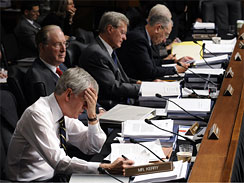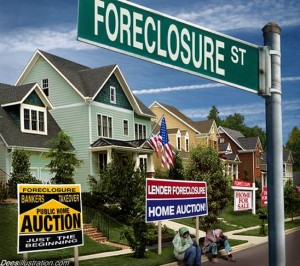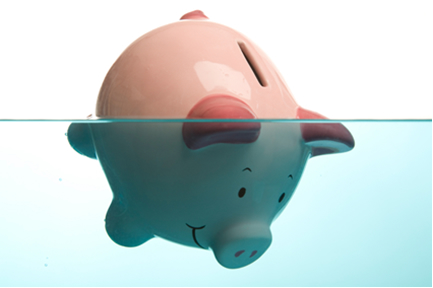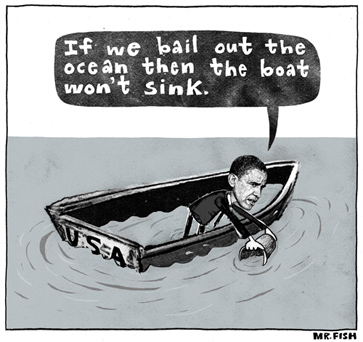09.24.2009 original publish date
09.25.2009 edit
05.25.2010 updated broken links
12.01.2010 updated/ replaced broken links
05.04.2012 updated broken links
05.22.2013 format edit. added numbered [brackets] for easier citation

You’re Sure There’s a Recovery in 2010, Right?
original article written by Net Advisor™
WASHINGTON DC. So the stock market is up, for now, a huge rebound since March 2009, signalizing a recovery or so they say.
We hear the mantra from government and some media alike that the economy is recovering. Maybe or maybe not?
Sure, it could be a slow recovery, or it could just be another phase. But whatever shape the economy may be in, there are issues that are not going away, and it looks like we have a long, long way to go before we can call this a recovery, assuming there is one right now.
I have argued that this will be a multi-year recession. Not a V shape, or U shape recovery. We will have another wave of issues (see points #1-7) to deal with.
Keep in mind that the U.S. is a consumer driven economy. So how does the economy recover without the consumer spending? The consumer still has some serious issues that will, not that it might or that it could, but will impact the economy.

[1] The Housing Problem That Can’t Seem To Go Away
Despite all the government “stimulus” including but not limited to housing tax credits, historically relativity low interest rates, and other government backed plans to help people stay in their homes that they really could not afford in the first place, home foreclosures are at record highs.
According to a July 16, 2009 report:
“One in every 84 households with loans got at least one foreclosure filing in the first half of this year (2009).”
— Source: Reuters
Oh, but that was July data, this is September, it’s different this time or is it?
The latest report suggests housing problems are accelerating, despite the trickle reports saying home sales are up.
Not only are foreclosures at record highs, U.S. mortgage delinquencies also set a new record last August.
“Foreclosure filings in the U.S. climbed to a record for the third time in five months.”
— Source: Bloomberg (PDF)
[2] 41% U.S. Sub-prime Loans Now Delinquent
How is the sub-prime market doing, is that stabilizing? I find it difficult how anyone can call a 41% delinquency rate, a “stable housing market.” If these housing numbers sound like another bailout is coming, you’re right.
If one thought that Fannie Mae and Freddie Mac have problems, there are still major money and risk issues with Ginnie Mae‘s $1 Trillion problem and the FHA insuring 25% or 1 out of every 4 homes in America, thus these record foreclosures mean a lot of money will be needed to cover this problem too. The FHA believes that it won’t need a bailout, but the continuing record real estate foreclosures is creating capital problems for the world’s largest mortgage insurer.
[3] Housing Recovery?
Some economists predict that the home building market will recover in 2010. Somehow this just doesn’t seem to be a very likely scenario. In case no has been paying attention, home builders have been having an extremely difficult time. There are plenty of existing homes, and foreclosed ones on the market, and commercial real estate is not exactly what one would be call, “booming.”
And if builders think they can pass on 2009 higher commodity costs (source 2) for lumber, steel, copper, aluminum, and fuel, etc, in the form of higher home prices, guess again. Assuming one can even get a loan for a home, qualifying consumers are buying more at the low-priced end of the market. Home prices in the West are down on average 28% from a year ago.
“(Real estate) sales were concentrated in the low end of the market. About a fifth of sales were for less than $100,000, and 70% were for less than $250,000.”
— Source: Marketwatch.com
Consumers are not going to feel sorry for the builder’s increased building costs in a recession. Their attitude will be, “this is MY offer, that’s all I can afford… take it or leave it.” Besides according to the above recent housing data, consumers who are buying, are buying the cheapest homes on the market. And I have no clue where one buys a $100,000 home let alone $250k, but one thing is likely true, it is nowhere near water.
[4] So Who’s Really Buying?
The Federal Reserve has been the biggest mortgage buyer in the world in effort to try and push the housing market higher.
“The housing market is also being propped up by the Federal Reserve’s purchases of nearly $1.5 trillion in mortgage-related securities, accounting for about 80% of the market.
The Fed said Wednesday (09-23-2009) it would slow its purchases and end them by next March (2010).”
— Source: The Federal Reserve
Factor the FED out of the housing market and what do you have? Correct, a very small and strained real estate market.
Because the FED or the U.S. government can’t stimulate housing forever, housing in my rough estimate, may take 10-15 years to recover, but not back to peak prices. U.S. News argues that it may take 20 years for housing to recover. I don’t know about that, but the ever growing deficit is a big problem, commercial real estate re-fi could be a problem over the next several years, and if interest rates go up sharply then watch for the next wave of economic problems to begin. As if the economy didn’t have enough problems, bankruptcies are still soaring.

[5] Bankruptcies Soar:
August Consumer Bankruptcy Filings Up 22%
Nevada now has the highest bankruptcy filings in the country. Some 954,911 people filed for bankruptcy from January to August of 2009, and this number is expected to exceed 1.45 million this year. (Source: USA TODAY)
Consumer debt is down, but that can be argued because bankruptcy eliminates part or all of consumer debt.The increase in bankruptcies suggest that clearly, there are still serious consumer financial issues out there.
Corporate Bankruptcies Are Up Sharply.
“So far in 2009, according to BankruptcyData.com, 139 U.S. firms—with assets of $386.2 billion—have filed for bankruptcy protection or liquidation. In all of 2008, 138 firms with assets of $1.16 trillion filed for bankruptcy. In 2007, by contrast, bankruptcy was filed by 78 firms with assets of just $70.5 billion.
— Source: Bloomberg-Businessweek
The result of these corporate bankruptcies means that more jobs will be lost. Fewer jobs means no money to pay the mortgage, credit cards, or autos. Somehow government thinks none of this matters that we can have a “jobless recovery.”
[6] A Jobless Recovery?
Sounds like these terms could be an oxymoron.
President Obama did say he would create or save jobs (January 2009):
“President-elect Obama said…an analysis of his stimulus proposals shows that between 3 million and 4 million U.S. jobs could be saved or created by 2010, nearly 90% of them in the private sector.”
— Source: Reuters
The Heritage Foundation, a non-profit organization has taken issue at Obama’s “create or save job plan.” Obama did save a lot of auto workers jobs but at the tax payer cost of over $80 Billion so far.
Where are those jobs again? Because whatever alleged jobs that are being “saved” or “created,” employment numbers are not improving.
[7] Record Unemployment
Since the start of the recession (government calls this December 2007) there has been a NET LOSS of jobs to the tune of 7.4 million, and a total of 14.9 million people unemployed in the U.S. right now. The unemployment rate currently is 9.7% – a 26 year high, back at 1983 levels.
Even the teen unemployment rate is now over 25%, which is the highest rate since records on this statistic was first kept in 1948 (Official August Unemployment Report). Some people may think teens are not vital to the economy but they do play a role.
Teens are not known as being savers; they are spenders. Teens don’t have mortgage payments or too many major financial responsibilities, so they spend what they earn. It is estimated that teen discretionary spending runs about $200 billion a year.
It is expected that 210-239 million people will be unemployed world-wide. Despite massive stimulus in the #2 economy in the world, Japan’s unemployment rate is also at a record high. Japanese exports have also plunged 36% in August (2009), the 11th monthly decline. The U.S. is not the only country with economic issues.
[8] $50 Trillion Lost in 2008
In 2008, $50 Trillion worth of assets was lost in the global financial crisis. These assets are not coming back anytime soon, and much of them are gone forever. This would suggest that it will take many years to recover some of these losses.
[9] “Camp 2010”
Several leading groups and people think that the economy will recover in 2010. The International Monetary Fund (IMF) predicts, along with the Chief Economist Mark Zandi at Moody’s Credit Rating Agency predicts, and the Federal Reserve Chairman Ben Bernanke predicts that recovery will be here in 2010, “Camp 2010.” None of these people foresaw the current recession, so we expect them to predict the recovery?
Based on the data hereto, it is more likely to suggest that a multi-year recession is the outcome or call it a “slow recovery” or “slow growth for years to come.” Whatever semantic spin economists and government want to call the “recovery/ recession,” 2010 may be a very optimistic forecast, and arguably, the stock market has priced in a flawless recovery. Any blips, disappoint, anything short of that rose forecast, could mean an economic retracement and in the stock market.
[10] Banks Still Busting
The FDIC has seized 94 banks through September 18, 2009, or about 10 banks a month. Last year (2008) there were about 25 bank failures, and just 3 bank failures in 2007 (List of FDIC failed banks). That may not be so bad when compared to 1989, when the S&L Crisis crashed 534 Savings & Loans in the USA. But when one compares the cost of the 1989 bailout of $160 Billion to today’s bailout the numbers are staggering.
[11] Bailout Costs
The U.S. has committed some $11 Trillion (about twice the National Debt) to the current economic bailout. This includes the Obama stimulus, and other programs. It does not include an “unlimited amount of money” for Foreign exchange dollar swaps or an unlimited amount of money for securing money market funds, which has shown much better signs of stabilizing since 2008. Some of these numbers need revision. For example the auto bailout is actually some $80 billion and the government is using TARP funds, which does not seem to be included in this chart.

[12] The $500 Billion FDIC Bailout
The Federal Deposit Insurance Corp (FDIC) whose job is to insure bank deposits for bank customers has approximately $10.4 Billion in reserves that is guaranteeing customer bank deposits worth $4.5 Trillion.
The FDIC asked Congress back in May 2009 to up its credit line from $30 Billion (Thirty-billion) to $500 Billion (Five-Hundred-billion) through 2010, and they got it. As of August 27, 2009, the FDIC reportedly has over 400 banks on their “problem” list, and these banks are holding $300 Billion of assets. The FDIC does not publicly disclose what banks are on their “problem” list.
The FDIC may not need all these tax payer funds to repay qualifying depositors from the failed banks it is taking over. Congress extended the $250,000 deposit insurance coverage from previous $100,000 through 2013. This move did not help the FDIC as now the government agency has to be able to have more reserves to meet potential bank failures. The FDIC is not likely to fail, as any money it needs will just be signed into law by Congress. That means the tax payer pays for the bank failures that exceeds the insurance premiums banks are currently paying to the FDIC.
[13] Stimulus Also Equals Debt
By the end of September 2009, the U.S. government via the Treasury Department will have issued $7 Trillion (seven-trillion-dollars) worth of bonds for all of 2009.
“According to Treasury, in fiscal year 2009, Treasury held a record 291 auctions in 251 business days and issued nearly $7 trillion in gross marketable securities, a significant portion of which was used to roll over, or refinance, existing debt.”
— Source: GAO Report # GAO-10-498, May 18, 2010
This report was also confirmed by Reuters:
“In fiscal year 2009…(ending 09-30-09, the U.S.) Treasury will have issued $7 trillion in gross issuance (treasury bonds)…in a 12-month period…”
— Source: Reuters
The government is going to have to come up with a way to reduce these deficits. One solution would be to spend less than they take in. No, that would be too easy, and how would all the special interest groups feel if they suddenly were cut out in getting free tax payer money?
[14] A Bang Up Stimulus Job
The real consumer stimulus was not government initiated, or was it? When Presidential Candidate Obama was leading in the 2008 General Election, and ever since then, consumers across the USA have been buying firearms and ammo in record sales numbers. More on this later.
[15] The FED‘s “Catch 22”
The FED is in a Catch 22 situation. On one hand, the FED wants to raise rates now to hedge off what is undoubtedly going to be future inflation from this entire massive governmental “stimulus” and other spending.
On the other hand, if the FED raises rates, that could send the economy into free fall again as early as 6-9 months to 12-18 months later per interest rate increase. Higher rates won’t help the fragile consumer at all:
- Higher interest rates eventually slow economic growth, and tend to decrease consumer spending (as if we need slow growth and decreased consumer spending);
- Mortgage rates will go up (seen that one before);
- Car loans will cost more (and we know about the problems in the auto industry);
- Student loans go up;
- Credit card interest rates will go up, raising the cost to manage consumer debt.
Consumers are still sitting on some $14 Trillion of debt, and businesses with $11 Trillion, and higher interest rates on that kind of money could further squeeze the already consumer and some businesses into a bankruptcy situation.
The reason why rates are not going up now is because Fed Chairman Bernanke knows that higher rates would increase gov cost on the $11+ Trillion in debt and loan guarantees, plus the FED’s own $2 Trillion+ holdings, and this higher loan cost would be disaster for the government and make the deficit soar even faster.
[16] It’s Not What I Say…It’s What I Do…
The FED said on or about Sept 15, 2009 that the ‘recession is technically over,’ (words) but then the FED stated less than 10 days later on or about September 23, ‘the U.S. economy’s return to growth is insufficient to withdraw stimulus‘ (actions). So the 2004-2006 inflation we never had, and the 2007+ recession we didn’t have is technically over, but we’re not going to raise rates nor are we going to take away the stimulus because the economy doesn’t need it?
So the FED is not raising rates now as I have argued back in August 2009. We don’t need higher rates. We need a stable economy first. And a stable economy begins with a stable consumer.
[17] Summary of the 2010 Economic Recovery
- Housing: Record foreclosures are still a problem.
- Bankruptcies are still soaring.
- Unemployment continues to rise.
- Banks are still failing at higher rates.
- We have to bailout the bailout agencies (FDIC, FHA).
- Guns and ammo sales soar.
- The government is spending like crazy creating record debt.
- And the FED is in a quagmire about how to manage the economy.
All of this sounds as if a turnaround in the economy is only a few months away.
Please report broken or outdated links.
image(s) copyright by respective owners
Copyright © 2009 Net Advisor™ All Rights Reserved.
original content Revised copyright © 2012-2013 NetAdvisor.org® All Rights Reserved.
NetAdvisor.org® is a non-profit organization providing public education and analysis primarily on the U.S. financial markets, personal finance and analysis with a transparent look into U.S. public policy. We also perform and report on financial investigations to help protect the public interest. Read More.

